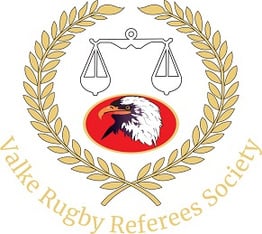
Valke Rugby Referee Society
Referees training WEBsite
Referee
for the better.
Scrums
A rugby referee has a number of responsibilities at a scrum to ensure that the scrum is safe, fair, and conducted in accordance with the laws of the game.
Here are some of the things that are expected from a rugby referee at a scrum:
- Control the engagement: The referee's first responsibility is to ensure that the scrum is set up and engaged properly. The referee will signal when both teams should come together and bind, and when they should start pushing.
- Monitor the scrum: Once the scrum is engaged, the referee must monitor the scrum to ensure that both teams are pushing legally and that there is no collapsing, boring in or wheeling. The referee must also ensure that the scrum is stable and safe for the players.
- Award penalties: If a team commits an infringement at the scrum, such as collapsing or boring in, the referee may award a penalty to the opposing team.
- Reset the scrum: If the scrum collapses or is not completed properly, the referee may reset the scrum.
- Award possession: When the scrum is completed, the referee will award possession of the ball to the team that has successfully won the ball, or if there is an infringement, he will award a penalty to the non-offending team.
- Manage the scrum-half: The referee must ensure that the scrum-half feeds the ball into the scrum properly, and that the ball is released from the scrum in a timely manner.
Overall, the rugby referee plays a crucial role in ensuring that the scrum is conducted safely, fairly, and in accordance with the laws of the game.
SCRUM: CHECKLIST
Stability at each call - Slow scrum cadence throughout
CROUCH
- Hookers set up left of mark with right foot
- Shoulders square and out
- Hooker has brake foot
- Front rowers head in gap
- Front row must hold balance - No pulling back or pushing forward by back 5
BIND
- Long bind on body (behind shoulder - no pushing on the bind) Scrum balanced (not over leaning or pulling back)
- Clear gap - No axial loading
- Hookers has brake foot (half brake optional)
SET
- Engage as ONE
- Shoulders above hips - Elbows horizontal
- No hit and chase (stability before feed - referee helps control)
- Push square when ball fed
- Readjustment on the rib
breakfoot
BRAKE FOOT (LAW 19.10 c)
Hookers must have a 'brake' foot positioned to help stability and to avoid axial loading
After bind, for safety reasons, the hooker can bring his front foot back to a “half” brake foot stance
The brake foot then moves completely backwards on “set” call
This action must not destabilise the setup or cause axial loading
Scrums - objectives
Fair Contest
Reward Legal Dominance
key focusing points for a rugby referee at a scrum:
- Safety: The safety of the players is the top priority for a rugby referee. The referee should ensure that the scrum is set up properly, and that both teams are pushing legally to avoid any risk of injury.
- Bind and engagement: The referee should make sure that both teams are bound together properly before engaging the scrum, to ensure that the scrum is stable and safe.
- Monitoring the scrum: The referee should monitor the scrum closely to ensure that both teams are pushing legally and that there is no collapsing, boring in, or wheeling.
- Ball feed: The scrum-half must feed the ball into the scrum properly, so the referee should ensure that the ball is put in straight and without delay.
- Ball release: Once the scrum has been won, the scrum-half should release the ball from the scrum in a timely manner to avoid any delay in play.
- Penalty decisions: If a team commits an infringement, such as collapsing or boring in, the referee should make a clear and consistent decision regarding the penalty or free-kick.
- Communication: The referee should communicate effectively with the players, especially the front-row players, to ensure they understand what is expected of them.
- Consistency: The referee should apply the laws of the game consistently throughout the match to ensure that both teams have a fair chance of winning.
What do we want to achieve?
we want the ball to go in and out at the scrum
The ball should be fed into the scrum and released by the scrum-half without delay, so that the scrum is completed as quickly as possible. This helps to ensure that the game is played at a fast pace and the scrum is not used to slow down the game. The purpose of this rule is to ensure that the ball is in play for as much time as possible, and to prevent any prolonged pressure on the neck and back of the players in the front row.
rewarding legal dominance
The referee is responsible for ensuring that the team that gains dominance does so through legal means and that the scrum is conducted safely.
How Are we going to achive this?
- Stability with each call: The referee should make sure that each scrum is set up properly before each call. This includes ensuring that both teams are in position and stable before the ball is put in.
- Wait for players to settle: The referee should wait for the players to settle before making the next call. This will ensure that the scrum is stable before the next action.
- Three calls - three actions: The referee should wait for the players to complete the three actions - crouch, bind, and set - before proceeding to the next call. This will help to ensure that the scrum is stable and safe.
- Do not continue with the next call before players are stable: The referee should not continue with the next call until all players are stable. This will help to prevent any instability that could result in injuries.
- Teams at the same height: Both teams should be at the same height when setting up for the scrum.
- Loosehead sets up straight: The loosehead prop should set up straight to ensure that the scrum is stable.
- Tighthead binds long and not in the armpit: The tighthead prop should bind long and not in the armpit to ensure that the scrum is stable and safe.
- Control by both teams prior to engagement: Both teams should exercise control and avoid any sudden movements before engaging the scrum. This will help to ensure that the scrum is stable and safe.
- Control on deload and teams not fading on hit: Both teams should exercise control when deloading and avoid fading on the hit.
By following these key points of interest, the referee can help to achieve stability in the scrum, which will result in a safer and fairer game for all players involved. This will also help to achieve both "ball in and ball out" and "rewarding legal dominance" at the scrum.
There are also some "off the record" issues that are important to keep in mind when it comes to scrum management in rugby:
Pre-Engagement:
- Speed up the formation (30 sec): The referee should aim to speed up the formation of the scrum and not allow too much time for players to set up. This will help to keep the game moving and prevent delays.
- Setup is key: The set up of the scrum is critical to ensuring stability, fairness, and safety in the game. The referee should ensure that both teams are set up properly and that the front row is square.
- Front row square: The front row of each team should be square, with the players' shoulders and hips aligned. This will help to ensure stability and prevent injury.
- Three calls, three actions: The referee should make sure that each scrum involves three calls and three actions: crouch, bind, and set. This will help to ensure that the scrum is set up properly and is safe.
- Stability: As mentioned before, stability is crucial to ensuring a safe and fair game. The referee should wait for the players to settle and ensure that the scrum is stable before proceeding with the next action.
- Height: The height of the players in the scrum is also important to ensure stability and fairness. The referee should ensure that both teams are at the same height.
- Control: Control is important both pre- and post-engagement. The referee should ensure that both teams are in control and not making sudden movements before engaging the scrum.
Post-Engagement:
- All players must push straight: After the engagement, all players should push straight and not twist or turn the scrum. This will help to ensure that the scrum is safe and stable.
- Teams walking around will not be rewarded: Teams that walk around the scrum or collapse it intentionally will not be rewarded.
- Reward the team that CLEARLY dominates (must go forward first): The team that clearly dominates the scrum by pushing forward should be rewarded.
- Be aware of who is winning the vertical battle: The referee should also be aware of which team is winning the vertical battle in the scrum, as this will also influence the decision on which team to reward.
Scrums – 5 stage process
Stage 2: Bind
Stage 3: The Hit
Stage 5: Push straight
Stage 1: Shape
Stage 4: Stability and control
Stage 1: Shape
- Hookers must be left of the mark
- All three front rows should show good shape
- Loosehead’s shoulder is must be out
- Hips must be straight
- Feet should be under their bodies
Stage 2: Bind
- Wait for all players to get a proper bind
- Do not continue with the next stage unless all players are settled with their binds
Stage 3: The hit
- Make sure that there is enough space
- No head on head leaning
- No coaxial loading by the hookers
- Loosehead should not step left of the mark
Stage 4: Control
- No hit and chase
- Give front rows an opportunity to settle their feet
Stage 5: Push Straight
- All eight players must push straight
Summary of 5 Stage process
As a referee, ensure that each stage of the scrum is executed properly to prevent injuries and maintain fairness in the game. During the first stage, all three front rows should show good shape, with the hookers positioned to the left of the mark, the loosehead's shoulder out, hips straight, and feet under their bodies.
During the second stage, wait for all players to have a proper bind before moving on to the next stage. During the third stage, ensure that there is enough space and no head-on-head leaning or axial loading by the hookers. The loosehead should also not step left of the mark.
In the fourth stage, avoid any "hit and chase" and give the front rows enough time to settle their feet. Finally, during the fifth stage, ensure that the push is straight. By following these guidelines, you can help maintain a safe and fair game.
Our 90/10
- Stick to 5 stage process
- Scrum going up or collapse, can't cop out by say “use it” Make a call – Reset or PK
- Dominance can only be rewarded If a team goes forward, a tilt on the axis is a reset
- Hookers left of the mark
- Three calls – three actions
- Control at each stage
- Stability
- Develop a system/process that works for you
White loose head poor shape and hiding shoulder
White lOOSE hEAD stepping left after hit
Tight head not taking the hit
Tight head not taking the hit
No hook and feed not straight
Stability
Setup
Running around
Lions running around
Legal dominance
Legal dominance
C1 Stepping out and no hook by Cheetah
S3 scrumming in and C1 follows
Clip 13 WP not pushing straight
WP not pushing straight 2
Here are some general notes to keep in mind when it comes to rugby scrum management:
- Referees to control pre-engagement: As mentioned earlier, referees have a crucial role in controlling the pre-engagement phase of the scrum. This includes ensuring that the scrum is set up properly, that both teams are ready, and that there is stability before the engagement.
- Referees to judge post-engagement: Once the scrum has engaged, the referee should judge and reward the team that is dominating the scrum legally, as well as make sure that all players are pushing straight and not walking around.
- Referees are encouraged to keep communication channel open with front rows: Communication is key in rugby scrums, and referees are encouraged to keep an open channel with the front rows of each team to ensure that the scrum is safe and stable. This can involve talking to the players before the engagement, making sure that they are aware of what is expected of them, and communicating with them during the scrum to ensure that everything is going smoothly.
practice session CLIPS
scrum Quiz to be added Soon

